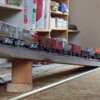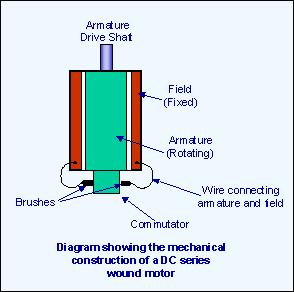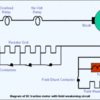Thought others might be interested. One aspect I love about the hobby is tinkering. Had some free time one afternoon and ginned up my own pull test rig. I used both ferrous (traditional Lionel tube) and non-ferrous (MTH RealTrax) track and tested many engines - from the Burro crane to 773. I mounted everything to a piece of plywood for easy deployment and storage, and fashioned leads to connect through a multimeter.
As to results, I'll use a "beater" semi-scale GG-1, the 4866, that I bought to tinker with (I installed traction tires). This forum let me know that this was apparently made by MTH for Lionel. I mention this in that it has a noticeably thicker shell and weighs a relatively substantial ~1 lb more than Lionel GG-1s. Results:
Test procedure: use ZW-R to achieve max pull force (usually at ~60-75% throttle)
Locomotive: Lionel GG-1 4866, 7.0 lbs engine weight
Pulling force, MagneTraction only (lbs):
Ferrous: 2.1
Non-ferrous: 1.4
Pulling force, MagneTraction and 4 traction tires (lbs):
Ferrous: 3.5
Non-ferrous: 3.1
No surprise that traction tires provide a HUGE advantage. Of note the ~50% advantage for MagneTraction on ferrous vs. non-ferrous track was pretty consistent across the big pullers - F3, Trainmaster, 773, etc. For lighter engines such as a 6220 Switcher or 665 steam loco there was very little advantage (10% at best). Another interesting note is I have duplicates of some locomotives and pulling force can vary substantially. Best I can figure is the stronger pullers have a bit rougher finish on the wheels (I disassembled them all to check for good operation, and then lubed appropriately).
As to the 4866 GG-1, after installation of traction tires, the wheels are barely turning during the pull test, so that means power output is the limiting factor and not traction. I didn't get any temperature readings of the motors but I'm sure they were heating up in a hurry. I'm going to order a solid-state reversing unit to see if the Pullmor motor is stronger and cooler on DC (my hunch is that it is, but will probably have a lower top speed).
















